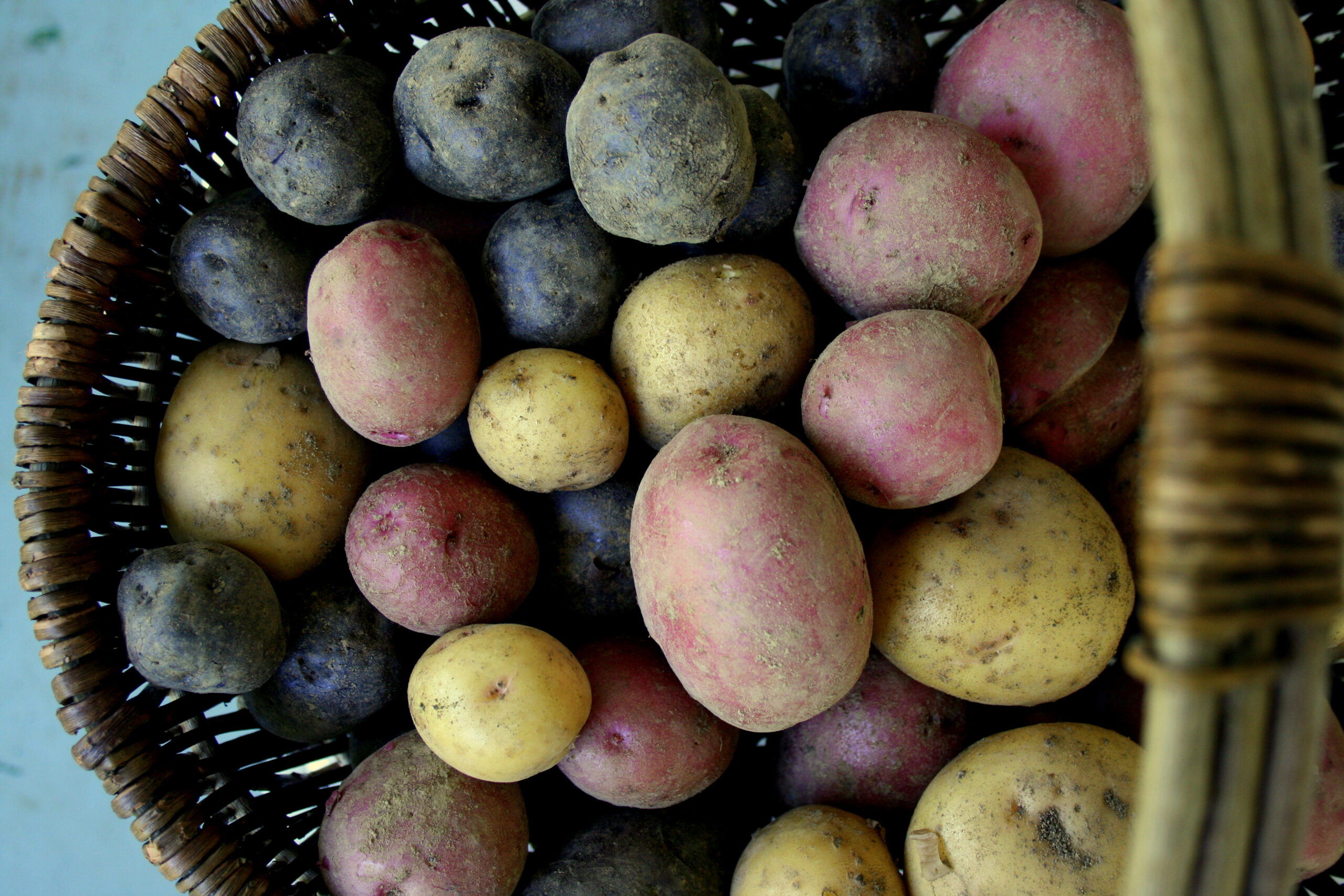Straw bale gardening is container gardening with a twist. Joel Karsten says this gardening technique works well anywhere in the country — or the world, for that matter.
Karsten, the inventor of the process, recently appeared on WPR’s “Garden Talk” to discuss how and why this method of gardening is ex-straw special.
“First off, the name can be misleading,” Karsten admitted. “With straw bale gardening, we’re not really growing plants in straw. Rather, the trick is that the inside of the straw bale becomes compost very quickly.”
Stay informed on the latest news
Sign up for WPR’s email newsletter.
To compost — or condition — the inside of a straw bale, a source of nitrogen and water is added to feed the bacteria in the bale that will cause the bacteria to replicate.
For that process, Karsten recommended lawn fertilizer or blood meal. Once those items are added, Karsten advised patience: “You won’t see it happening, but you’ll feel it. The inside of the bale will get warmer than the air temperature. At that point, it’s happening.”
“After a couple of weeks the bale will start to cool again,” Karsten continued. “Which means the cells of the straw have been broken into nutrients like nitrogen, phosphorus, potassium, molybdenum, zinc, iron and manganese. Everything a plant needs to grow is now available inside that bale.”
“It’s like magic,” Karsten laughed.
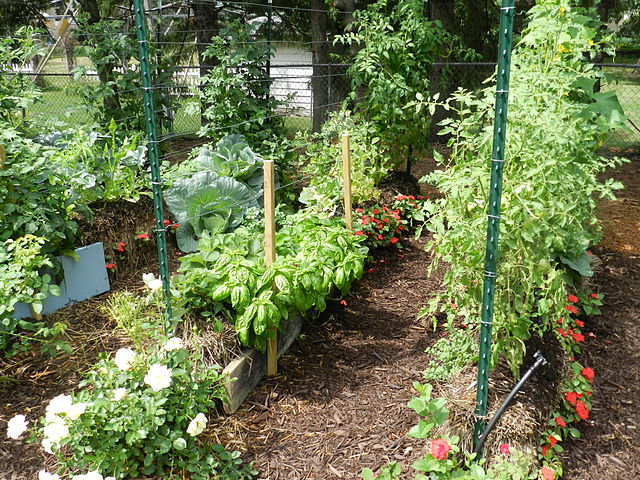
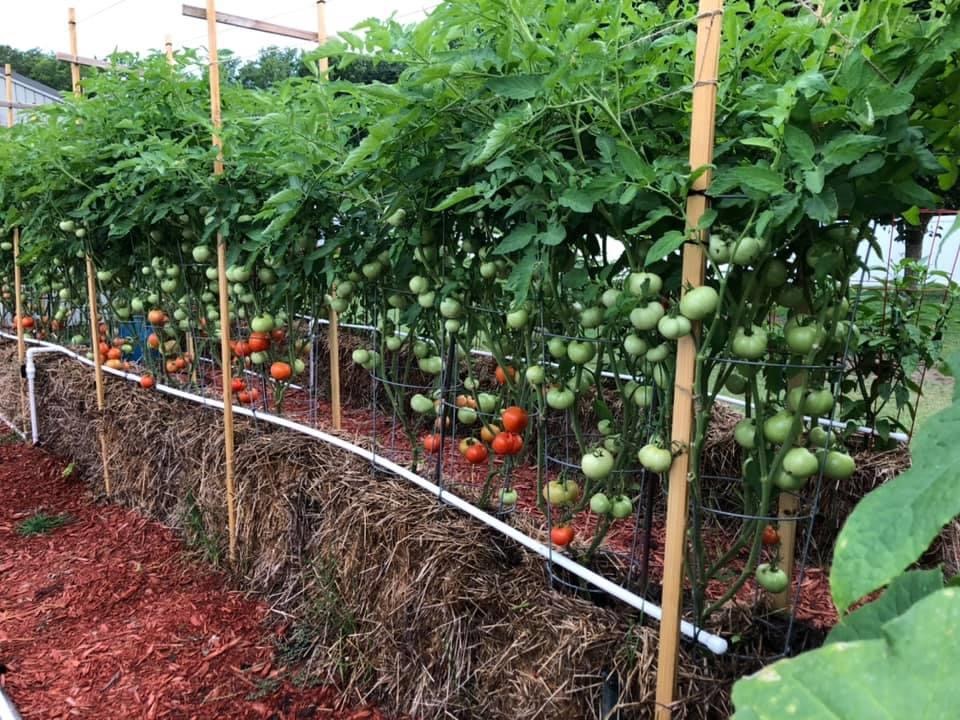
The specifics of straw bale gardening
Karsten advised that timing is crucial to the conditioning process: “I usually tell people to target 20 days before your location’s average last frost date before starting the process. That will provide a nice weather window for the conditioning process to happen.”
But once that process happens, straw bale gardeners should be able to plant right into the bales, including potted plants with the pots removed or seeds like peas, beans or squash. Karsten said that big seeds can be pushed right into the bale while tiny seeds — like carrots or basil — will require making a seed bed, albeit carefully.
“What we don’t want to do is introduce soil from our garden,” Karsten warned. “Because you might bring disease or insects that are harboring in that soil over winter.”
Instead, Karsten suggested adding a 1-inch layer of potting mix into the bale, watering it, then adding the seeds into the watered mix.
Karsten said straw bale gardeners should start with the narrow, prickly side of the bale at the top.
“You’re ideally going to plant the sides of the bale as well as the top,” Karsten specified. “If you have the narrow side at the top, you can get a roll of whatever down the middle. And then you can plant into the sides of the bale, using a transplant of some kind that has a root already established.”
But why the prickly side at the top?
“It’s just much easier to get water to enter the bale and to get your blood meal or lawn fertilizer to provide the nitrogen for those bacteria down inside the bale,” Karsten said.
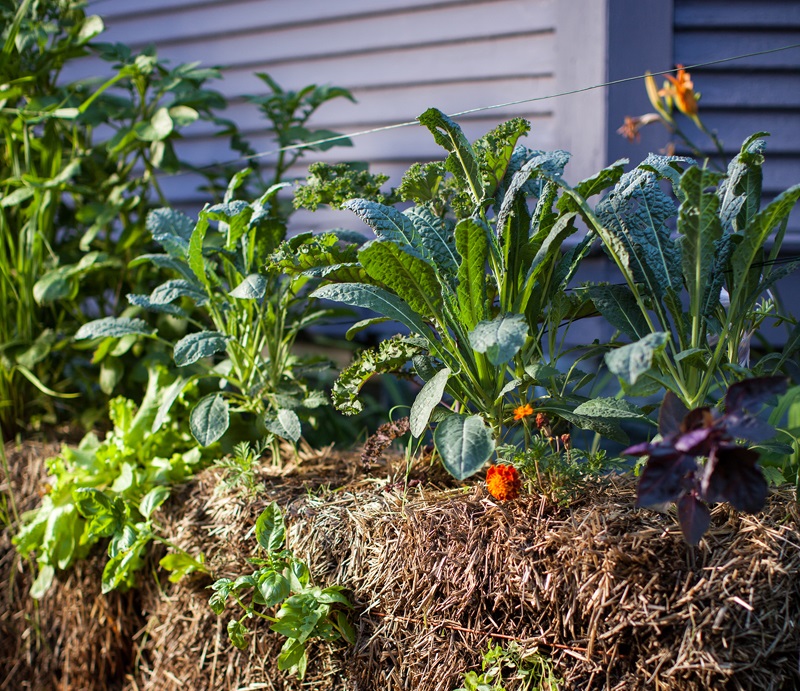
How long does composting the straw bale take?
A gardener’s choice of nitrogen will determine how long the colonization process will take.
Starting the recommended 20 days before your area’s scheduled last frost, the process should take about 12 days using lawn fertilizer.
Using blood meal will cause the process to take about 18 days. For first-time straw bale gardeners who don’t want to take any chances, Karsten recommended the conditioning agent BaleBuster, a product formulated specifically for straw bale gardens.
Karsten reminded skeptics who doubt the sanity of planting before the last frost that “the advantage of straw bale gardening is that the bale is nice and warm as it’s decomposing. Often, the bales will get up to 135 degrees and then cool down to around 100 degrees when you’re ready to plant. But it will still be 75-90 degrees inside the bale until you are past your last potential frost in the spring.”
To keep track of the temperatures through the colonization process, Karsten recommended a compost thermometer or relying on body temperature.
“A healthy person is 98.6 degrees,” Karsten said. “So, if the bale feels warm on your hand, it’s probably too warm to plant. But if it feels cooler or tepid, then it’s probably fine to plant.”
Karsten said that if a gardener is unsure about the temperature of the bale, they should add just one plant in the bale at first.
“If it starts to wilt, you know you’re in trouble. Pull it back out and wait another day for that bale to cool down,” Karsten suggested.
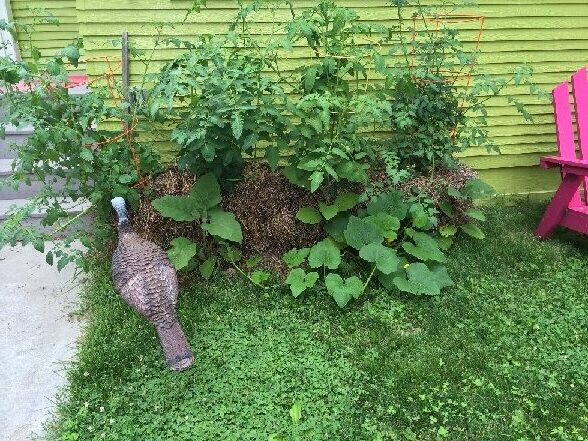
Why straw bale gardening?
Karsten said straw bale gardening is a great solution “for anyone who’s in a situation where they don’t have good soil. And you can do a straw bale garden literally on top of asphalt or concrete or on a rooftop or any place where most people would never attempt to have a garden.”
Karsten also insisted that straw bale gardening takes away many of the frustrations of soil gardening.
“You get a lot of moisture retention, since a dry bale of straw will suck up and hold between 5 and 7 gallons of water. There’s also a lot less weeding. For a lot of people, that’s the reason they don’t garden, because they hate pulling weeds all summer.
“You also don’t have those residual soil-borne diseases,” Karsten continued. “So, if you get tomato blight you don’t have to worry about not planting tomatoes in that soil until the blight goes away. You just get a new bale for your tomatoes.”

Maintaining your straw bale garden
Karsten recommended an irrigation drip system to control the amount of water fed into straw bales.
“The biggest mistake that new straw bale gardeners make is they tend to overwater,” Karsten said. “With a regular garden you can water until you see a puddle build up and then stop watering. You’ll never see that in a bale. If you water too long, water will run through the bale and you’ll lose soluble nutrients.”
For more expansive straw bale gardens, Karsten recommended keeping rows of bales 5 to 6 feet apart to give the plants plenty of space to grow and expand.
Karsten has also created a template for straw bale gardeners to build their own greenhouses. He estimated the build costs about $100, can be completed in about an hour, and should be set up about six weeks before the last frost date.
“You’ll be amazed how quickly they generate heat and start warming up the air inside for your seed trays. You can start 300 or 400 vegetable plants really easily in that type of greenhouse,” Karsten said.
Karsten commented that, despite the moniker given to this method of gardening, straw bales aren’t even necessary to try straw bale gardening.
“It’s really easy to make a bale out of leaves and grass clippings. Put it all in a plastic bin, stomp it down really well, and fill it up with water,” he said. “The next day, tip that bin upside down and you’ll have a big square brick. Then wrap that brick with chicken wire, staple both ends onto a wooden stick and pound the end of that stick in the ground.”
Karsten claimed a homemade bale might even perform better than a straw bale because of the presence of a “wider variety of nutrients than found in straw.”
As in a regular garden, ants in a straw bale garden are not going to cause irreparable damage, while slug infestations can be cured in a number of ways, from slug baits made of iron phosphate to baby food jars filled with beer.
“But some people claim that can be a waste of good beer,” Karsten joked.



